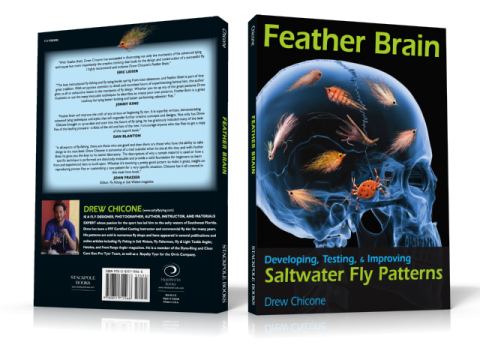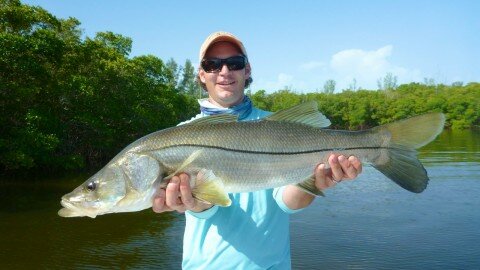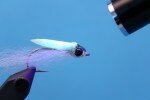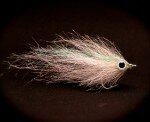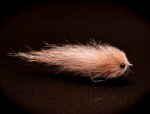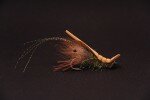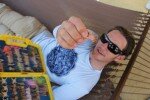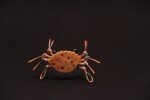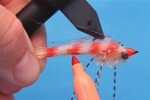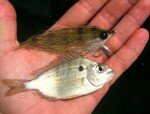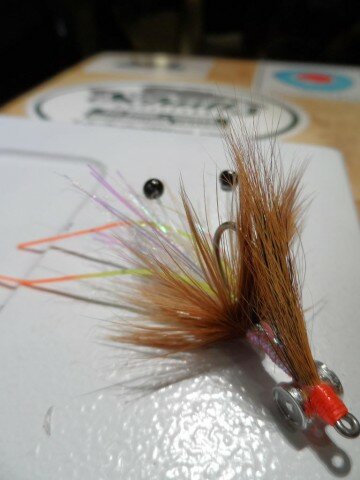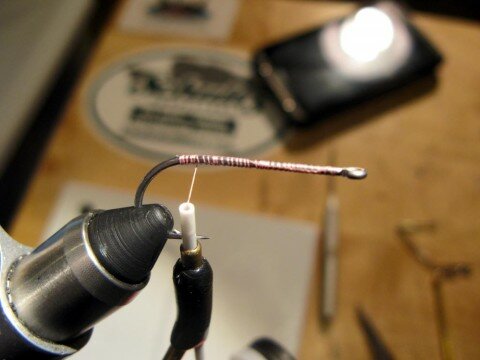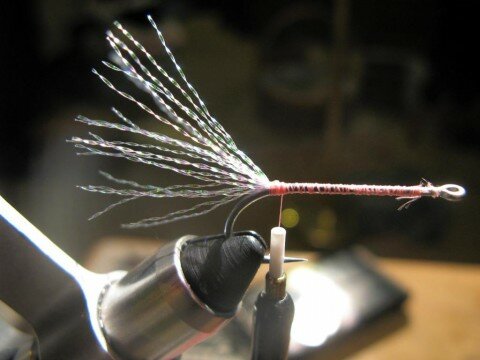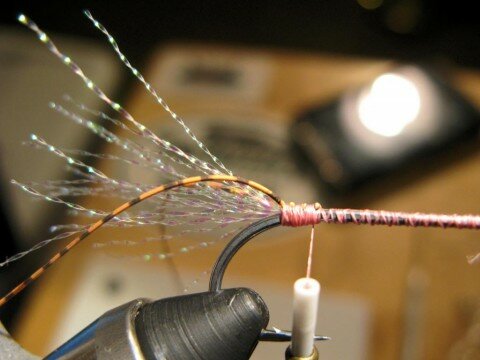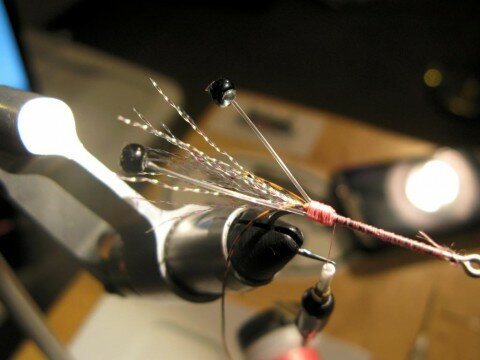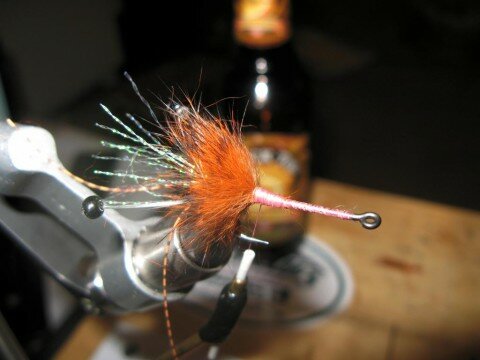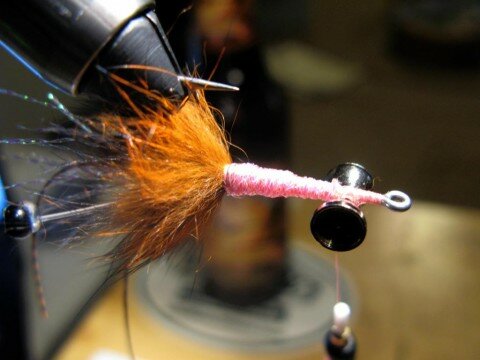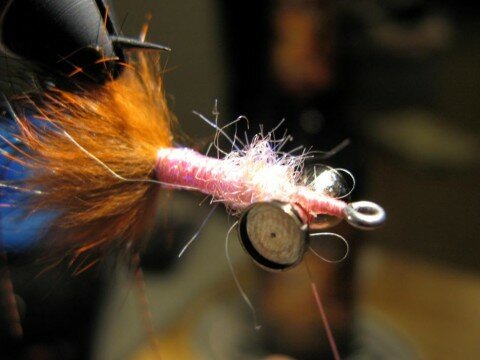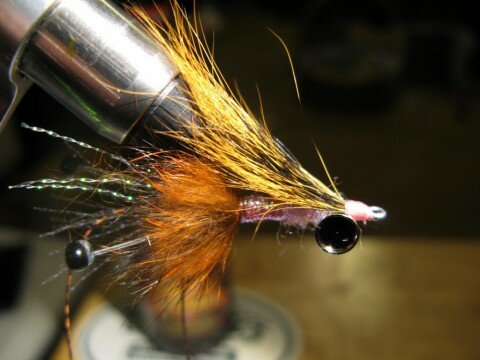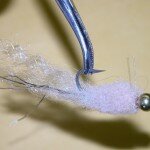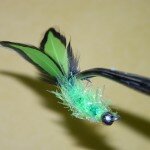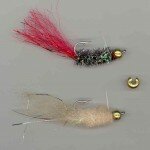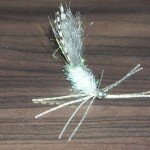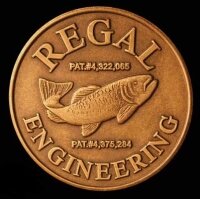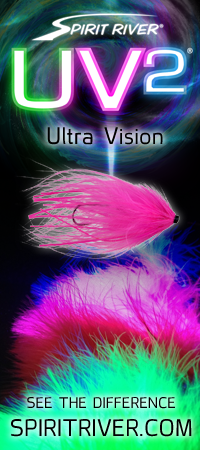
Just as flies for other species suggest various food forms appropriate for attracting those quarry, so bonefish flies portray the creatures eaten by Albula vulpes. However fly patterns for this elusive species must accomplish a few other critical tasks besides just looking like dinner. Bonefish flies must enter the water noiselessly and sink quickly and cleanly to fish level. They should attract a fish’s attention without frightening it. And, when you strip them, they must move enticingly, without snagging bottom. They should quiver–when stopped–to suggest the tense, trembling posture of startled prey. Furthermore, from a purely pragmatic point of view, they should never rust, crush, or fall apart. And, of course, they must also be easy to tie.
All that seems like a lot to ask of a fly. Yet patterns such as Charlies, Gotchas, Clousers, Kwans, Bristle Worms, Merkins, Ghosts, HOYs, and Horrors have been delivering the goods on the flats in the hands of capable anglers for season after season. And those workhorse patterns will often take fish at most destinations. But as more anglers pound more and more destinations and as new adventurers push into remote areas exposing even more bonefish to angling predation, fish everywhere have been getting smarter–and anglers everywhere need to raise the bar on their flies. Does that mean fly selection and fly design have become more important than presentation in bonefishing? No, not at all. With a target as spooky as the bonefish, presentation and a wary approach will always come first. But there will be days when your fly will matter more–and the bigger and smarter the fish you are chasing–the more likely it will matter most.
Among the 47 new flies added to the new edition of Bonefish Fly Patterns, 2nd Edition–Tying, Selecting, and Fishing all the Best Bonefish Flies from Today’s Best Tiers, most do the dual job of both seductively suggesting preferred bonefish prey while also incorporating all the esstial funtional characteristics needed to get in front of this fast moving wary fish. Two excellent examples are the Strip Tease and the Ghost.
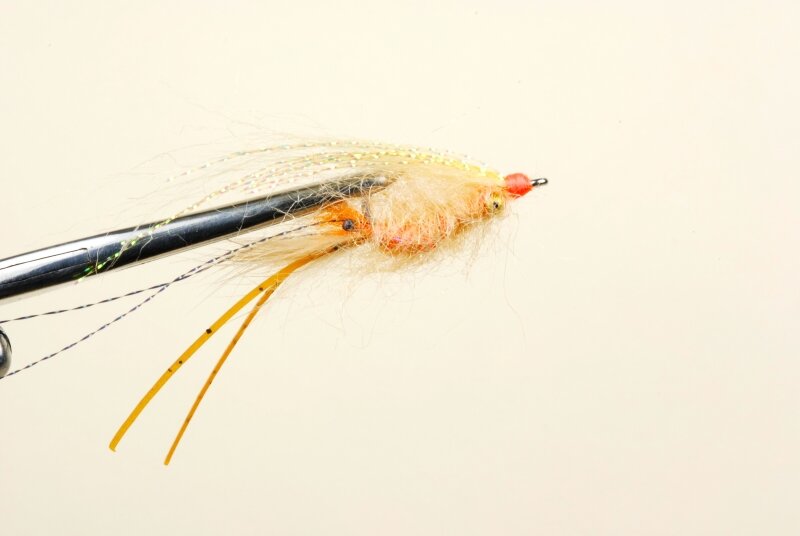
Strip Tease
Dick Brown design. Sample in photo was tied by Dick on a size 6 Gamakatsu SL11-3H hook and measures horizontally 3 3/16″ in overall length. Weighted reverse-wing fly rides hook-point up.
Hook: Gamakatsu SL11-3H or Mustad 34007; sizes 4, 6
Thread: Orange Flat Waxed Nylon or Monocord 3/0
Weight: 3/32″ or 1/8″ bead chain or lead barbell, sized to achieve desired sink rate
Eyes: Two stalks burnt 15 lb. or 20 lb. mono
Egg sack/underbody: Orange Aunt Lydia’s sparkle yarn Mouthparts: Natural tan rabbit hair pulled from hide
Claws: Pair of silicone or rubber legs
Antenna: Two strands black Krystal Flash
Body: Dub body with blended tan and pink Enrico Puglisi’s Shrimp Dub; palmer in a waxed dubbing loop and pick out so orange underbody “shines” through.
Wing/carapace: Craft fur, then six to eight strands pearl or lime Krystal Flash
Head/finish: Oversize orange thread, superglue, head cement
Tying notes: Tie in mouthparts, claws, and antennae extra long so they self-animate and wiggle even when the fly stops. Can vary dubbing color choice among pink, tan, and olive to approximate local shrimp varieties. Wapsi’s SLF Saltwater Dub and Senyo’s Laser Dub from Hareline are also very good mixes with good colors.
Location notes: The Bahamas, Los Roques, the Seychelles, the Yucatan, Christmas Island
Fishing notes: Bump-strip, stop, let it wiggle, watch, and strip-strike.
Prey notes: Suggestive of most shrimp forms; choose size and color based on local observation.
Anecdotes: I have been working for a long time on a design that would wiggle enticingly to tease fish into striking, both when stopped and stripped. Once the pattern started to work, the name was kind of a no-brainer.

Ghost
A Victor Trodella design. Sample in photo was tied by Victor on a size 6 Gamakatsu SL11-3H hook and measures horizontally 1 5/8″ in overall length. Unweighted fly rides hook-point down.
Hook: Gamakatsu SL11-3H; size 6
Thread: Clear monofilament thread, fine
Tail: Tan rabbit fur fibers plucked from hide, tied in with two strands pink shrimp Krystal Flash Eyes: Small Spirit River black mono eyes or burned mono eyes made from 20 lb. to 30 lb. mono
Body: Enrico Puglisi’s Shrimp Dub (blend of tan and pink) applied as dubbing (in a mono dubbing loop) and then picked out with a bodkin or Velcro-strip brush to look fuzzy and trimmed to shape. Author’s Note: EP Shrimp Dub is sometimes hard to find. Victor suggests substituting the EP Shrimp Dub Brush if you can’t find the Shrimp Dub product, which is the same dubbing pre-strung. He also likes the Wapsi SLF Saltwater dubbing as possible substitutes.
Tying notes: Victor applies the dubbing by doubling over the mono thread into a mono dupping loop, waxing it and attaching the dubbing, and twirling it into a dubbed “rope” prior to winding the “rope” onto the shank. Then he picks out he dubbing and trims off any wild-looking fibers. For a productive color alternative for fishing over grassy flats, use barred dyed tan and olive rabbit fur tail, with a blend of Puglisi’s Shrimp Dub in light olive and tan. The weight of the Gamakatsu SL11-3H alone allows this fly to hover in skinny water with almost neutral buoyancy, so avoid adding weight to this pattern.
Location notes: This fly has been extremely effective in skinny water and has worked well in shallow flats at all locations, including Bahamas, Los Roques, Yucatan, and Belize.
Fishing notes: Fish this fly in water up to 18 inches deep and retrieve it slowly with very short strips to keep it hovering in the water column just ahead of the fish. It looks like escaping prey, and the fish get quite excited by the motion of the materials and very slow looping drops during the retrieve. Author’s note: I have fished this fly now for five years and it is a killer pattern for tailing and cruising fish in thin water. It is my go-to fly for spooky fish in skinny water.
Prey notes: The Ghost is meant to be a general attractor pattern. The way bonefish hit it consistently in so many different locations suggests that it imitates several different prey. Author’s note: Suggests members of the common shrimp (Penaeidae), snapping shrimp (Alpheidae), and mantis shrimp (Squillidae) families.

New edition of Bonefish Fly Patterns!
Bonefish Fly Patterns, 2nd Edition–Tying, Selecting, and Fishing all the Best Bonefish Flies from Today’s Best Tiers, features the most comprehensive collection of bonefish fly patterns and tiers ever assembled in a single volume, with 197 fly patterns from over 100 veteran fly tiers, including such saltwater fly fishing icons. Like the original edition, the new version contains full-color, high-resolution, macro-lens close-ups of each featured fly, along with detailed descriptions of its authentic recipe, tying notes, fishing notes, prey it suggests, locations where it is effective, and fishing anecdotes about its use. [Bonefish Fly Patterns: Tying, Selecting, and Fishing all the Best Bonefish Flies from Today's Best Tiers, ISBN: 978-0-7627-7004-5 Hardcover Imprint: Lyons Press Trim: 7 1/2 x 9 1/4 Pages: 320, List $49.95]
You can purchase the new edition at Amazon:
http://www.amazon.com/Bonefish-Fly-Patterns-2nd-Selecting/dp/076277004X
For more about Dick Brown head over to his website:
http://dickbrownbonefishing.com


